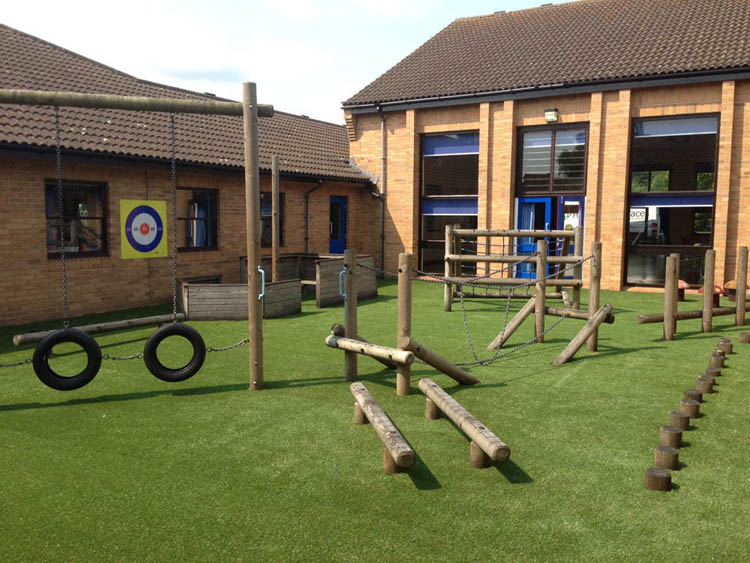Artificial Grass Play Areas
Artificial grass play areas, also known as synthetic turf play areas or artificial turf playgrounds, offer safe and versatile spaces for children to play and engage in various activities. These areas are designed to replicate the appearance and feel of natural grass while providing enhanced durability and low maintenance. Here’s an overview of artificial grass play areas:
Design and Features:
- Base Preparation: The foundation is properly graded and prepared to ensure adequate drainage and a stable surface.
- Artificial Turf Installation: Synthetic turf with shorter fibres is installed over the prepared base. The turf’s cushioning and playability characteristics are considered during selection.
- Shock Absorption Layer (Optional): A shock-absorbing underlay or pad may be included beneath the turf to enhance safety and provide fall cushioning.
- Infill Material: A suitable infill material, such as rubber granules or sand, is spread over the turf to provide stability, support, and cushioning.
- Play Equipment: Play structures, swings, slides, and other equipment can be installed in the play area, integrated with the artificial grass surface.
- Safety Surfacing: In high-impact areas under play equipment, additional safety surfaces like rubber tiles or poured-in-place rubber may be installed to minimise injuries from falls.
Advantages:
- Safety: Artificial grass play areas are designed with safety in mind, with shock-absorbing layers and materials that reduce the risk of injuries.
- Durability: Synthetic turf can withstand heavy use, making it suitable for high-traffic play areas.
- All-Weather Play: Artificial grass can be used in various weather conditions, allowing children to play year-round without concerns about mud or dirt.
- Low Maintenance: Unlike natural grass, synthetic turf requires minimal maintenance, eliminating the need for mowing, watering, and fertilising.
- Consistency: The even surface of artificial grass provides consistent playability and traction.
- Aesthetics: Artificial grass play areas maintain a neat appearance without the wear and tear associated with natural grass.
Maintenance:
- Regular Cleaning: Remove debris, leaves, and any foreign objects from the surface.
- Brushing: Periodically brush the turf to keep the fibres upright and even.
- Infill Redistribution: Monitor and redistribute the infill to ensure it remains evenly distributed.
- Repairs: Promptly address any damage, seams, or tears to prevent further deterioration.
- Equipment Inspection: Regularly inspect play equipment for safety and make any necessary repairs.
Artificial grass play areas provide a safe and inviting environment for children to engage in physical activities and imaginative play. When designing and installing these areas, it’s crucial to collaborate with experienced professionals who understand safety standards and considerations for play equipment and surfaces.



